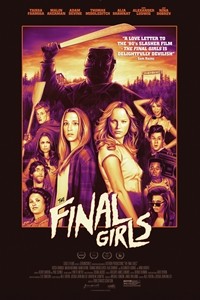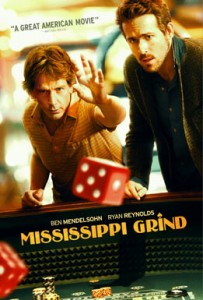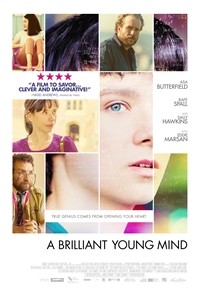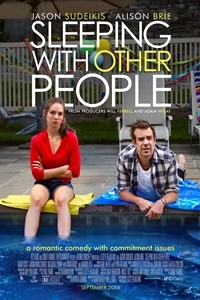 “A well-designed ‘Steve Jobs’ leaves the audience wanting a future release”
“A well-designed ‘Steve Jobs’ leaves the audience wanting a future release”
Director: Danny Boyle
Writer: Aaron Sorkin
Starring: Michael Fassbender, Kate Winslet, Seth Rogen, Jeff Daniels
“Musicians play their instruments. I play the orchestra.”
Steve Jobs (Michael Fassbender) gives this answer to fellow Apple founder Steve Wozniak’s (Seth Rogen) cynically-asked question: What do you do?
We do know: Jobs and Apple orchestrated a revolution in the way human beings - in 2015 - work, socialize, shop, cultivate information, make decisions, and live. Oh, I forgot to mention the way we listen to music too, among a laundry list of other specific activities.
The vast reach of Jobs’ impact is incalculable, so constructing a biopic on the man seems nothing short of a daunting and puzzling task. Where to start? What to cover? How do you tell the man’s life story inside of two hours of screen time? Enter cinematic heavyweights, director Danny Boyle (“Trainspotting” (1996), “127 Hours” (2010), “Slumdog Millionaire” (2008)) and screenwriter Aaron Sorkin (“The Social Network” (2010), “Moneyball” (2011), “A Few Good Men” (1992)) to solve the dilemma. Sorkin especially is a well-chosen person for this job with his previous work on contemporary and complex social phenomenons like Facebook and modern baseball statistics, and also with politics and the media in television’s “The West Wing” (1999-2006) and “The Newsroom” (2012-2014).
Both men succeed in constructing a film about Jobs which not only gathers and presents frank insight into how he thinks and interacts with his closest confidants, but the picture also entertains and provides authentic drama.
Construction is the key word, as Sorkin takes a sizable amount of risk by structuring the movie in an unexpected way. I do not wish to reveal – and spoil the surprise of - how the foundation of a 2 hour and 2 minute film supports a razor sharp and highly-charged script in which Jobs verbally jousts with a collection of players like Wozniak, Apple CEO John Sculley (Jeff Daniels), technical guru Andy Hertzfeld (Michael Stuhlbarg), and marketing director Joanna Hoffman (Kate Winslet).
This A+ cast beautifully choreographs their characters’ 98 mph verbal volleys around intricate office politics and power plays with natural ease.
Rogen’s Wozniak jealously marvels at Jobs’ visionary charisma, while he wishes for a tiny fraction of his fame.
Daniels’ Sculley stands atop the corporate pyramid and dances the “idea machine-waltz” with Jobs at lofty philosophical and political levels.
Stuhlbarg’s Hertzfeld plays the brilliant engineering-type who deals with Jobs’ eccentric and, sometimes, unrealistic demands, and Winslet’s Hoffman is Jobs’ most trusted ally while always giving him cold and hard facts, whether he wants to hear them or not.
These relationships - portrayed in the film – seem to form a clear picture of the man.
Of course, Fassbender exists in the extreme center, offers a fearless dive as Jobs and delivers a masterful performance with intensity, thoughtfulness and depth which humanizes the mythology of one of the great visionaries within the last 100 years. There is a moment in the picture when Jobs states that the two most important events of the 20th Century are: when the Allies won the war and the launch of the Mac personal computer in 1984. Well, I cannot agree with that statement, but Jobs surely reached elevated historical status with Apple’s creations over the last 10 years.
There is much responsibility on the shoulders of Sorkin and Boyle when presenting such an important on-screen biography. The film’s spirit seems spot on, but on the other hand, due to its narrative choices (which I, again, will not reveal), it also – unfortunately - feels incomplete. Now, within the confines of the movie’s structure, it does satisfy. “Steve Jobs” does tie the loose ends that the plot pulls on throughout the film’s runtime and offers a satisfying amount of emotion with one particular character (which I did not previously mention for a reason). As the movie ends, however, it does not feel that we – as an audience – received enough. Too much of his life felt left on the cutting room floor or not written at all.
As the credits rolled, I had more questions that I wanted answered and hoped for a message – in bold white text on a black movie screen - which said: “STEVE JOBS PART II” COMING SOON!
No such luck.
Well, I suppose when a highly-skilled orchestra ends an inspiring two-hour performance, one is left with wanting more. (3.5/4 stars)

 Bridge of Spies
Bridge of Spies
 “The foreclosure film ‘99 Homes’ serves stressful theatre”
“The foreclosure film ‘99 Homes’ serves stressful theatre”
 “He Named Me Malala” features an extraordinary woman in a less-than-perfect documentary
“He Named Me Malala” features an extraordinary woman in a less-than-perfect documentary
 The Final Girls
The Final Girls
 Interview – Adriana Trigiani, Jenna Elfman and Paul Wilson of “Big Stone Gap”
Interview – Adriana Trigiani, Jenna Elfman and Paul Wilson of “Big Stone Gap”



 “Mendelsohn and Reynolds are a pair of aces in ‘Mississippi Grind’”
“Mendelsohn and Reynolds are a pair of aces in ‘Mississippi Grind’”
 The Walk
The Walk
 The Martian
The Martian
 Sicario
Sicario
 The Intern
The Intern
 A Brilliant Young Mind
A Brilliant Young Mind
 Interview – Oren Moverman, director “Time Out of Mind”
By Jeff Mitchell
Interview – Oren Moverman, director “Time Out of Mind”
By Jeff Mitchell people. New York is quite an overwhelming city in terms of the mass volume of humanity in your face all the time. The more people there are, the more alone you can be. When you have so many people (in one place), then they (simply) do not see each other. So, I think the state of homelessness - that kind of isolation - leads to deprivation of very basic needs. The lack of eye contact or human contact just makes the problem worse for sure.
people. New York is quite an overwhelming city in terms of the mass volume of humanity in your face all the time. The more people there are, the more alone you can be. When you have so many people (in one place), then they (simply) do not see each other. So, I think the state of homelessness - that kind of isolation - leads to deprivation of very basic needs. The lack of eye contact or human contact just makes the problem worse for sure.  OM: That was our biggest worry: Are we going to get away with putting Richard Gere in this environment. We tested it. What we discovered – when we hid the camera, because we didn’t want the camera in people’s faces to give away the fact that we’re shooting a movie - is they didn’t recognize him at all because they didn’t look at him. It was a very deliberate, very understandable, very human, and a very New York approach. Urban dwellers would just walk past this homeless guy, and maybe someone would pay attention and maybe someone would give something, but ultimately no one looked him in the eye. It wasn’t as if he was unrecognizable as Richard Gere. He was unrecognizable as a movie star, for sure. He was unrecognizable in his clothes because that’s not how you would expect to see Richard Gere. The fact that no one looked him in the eye, it was a lesson for us when someone in that position becomes quite invisible to the people around him. He did get recognized twice in Grand Central Terminal when two people walked by him and said, “Hello”. It wasn’t sort of “Oh my God, it’s a movie star. Let me take a picture.” It was more like, “Hey, he looks like Richard Gere. It looks like he is having a hard time.”
OM: That was our biggest worry: Are we going to get away with putting Richard Gere in this environment. We tested it. What we discovered – when we hid the camera, because we didn’t want the camera in people’s faces to give away the fact that we’re shooting a movie - is they didn’t recognize him at all because they didn’t look at him. It was a very deliberate, very understandable, very human, and a very New York approach. Urban dwellers would just walk past this homeless guy, and maybe someone would pay attention and maybe someone would give something, but ultimately no one looked him in the eye. It wasn’t as if he was unrecognizable as Richard Gere. He was unrecognizable as a movie star, for sure. He was unrecognizable in his clothes because that’s not how you would expect to see Richard Gere. The fact that no one looked him in the eye, it was a lesson for us when someone in that position becomes quite invisible to the people around him. He did get recognized twice in Grand Central Terminal when two people walked by him and said, “Hello”. It wasn’t sort of “Oh my God, it’s a movie star. Let me take a picture.” It was more like, “Hey, he looks like Richard Gere. It looks like he is having a hard time.”  Black Mass
Black Mass
 Everest
Everest
 Sleeping with Other People
Sleeping with Other People
 The Visit
The Visit








